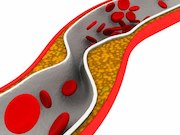Treatment effect is greater in patients with dyslipidemia; absolute risk reduction of 2.15 percent
TUESDAY, Feb. 27, 2018 (HealthDay News) — For individual patients with type 2 diabetes mellitus (T2DM), the effect of fenofibrate treatment varies and is larger in patients with dyslipidemia, according to a study published online Feb. 22 in Diabetes Care.
Charlotte Koopal, M.D., from the University Medical Center Utrecht in the Netherlands, and colleagues estimated the expected treatment effect of fenofibrate for 17,142 individual patients with T2DM. Results from the FIELD risk model were externally validated in patients from the ACCORD and SMART observational cohorts. The individual treatment effect was the difference between treated and untreated major cardiovascular event (MCVE) risk, expressed as the absolute risk reduction (ARR).
The researchers observed good calibration and moderate discrimination in ACCORD and SMART (c-statistic, 0.67 and 0.66, respectively) on external validation of the FIELD risk model. In all three studies combined, the median five-year MCVE risk was 9.4 and 6.7 percent for patients with and without dyslipidemia, respectively. The median ARR was 2.15 and 0.22 percent for patients with and without dyslipidemia, respectively, corresponding to a number needed to treat of 47 and 455, respectively.
“In individual patients with T2DM, there is a wide range of absolute treatment effect of fenofibrate, and overall the fenofibrate treatment effect was larger in patients with dyslipidemia,” the authors write. “The method of individualized treatment effect prediction of fenofibrate on MCVE risk reduction in T2DM can be used to guide clinical decision-making.”
Abstract/Full Text (subscription or payment may be required)
Copyright © 2018 HealthDay. All rights reserved.








